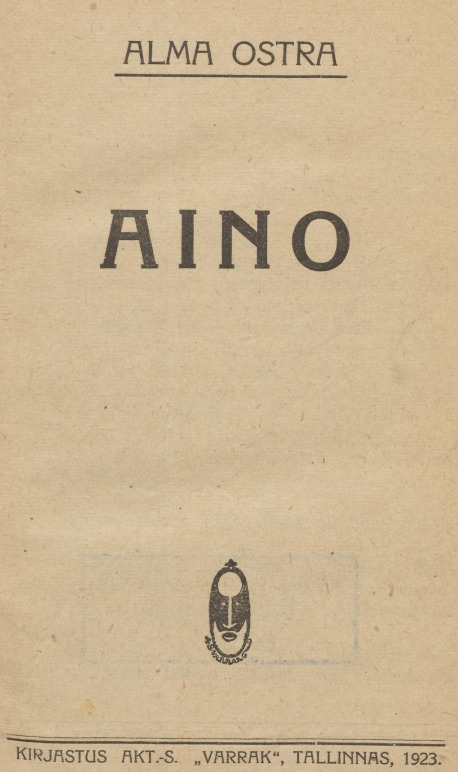Merlin Kirikal. Decadent Writing as Feminist Practice: The novella ”Aino” by Alma Ostra

Kirikal, Merlin (2023). Dekadentlik kirjutus kui feministlik praktika: Alma Ostra jutustus „Aino”. Keel Ja Kirjandus, 8–9, 873−899. DOI: 10.54013/kk788a7.
Decadent writing as feminist practice: The novella “Aino” by Alma Ostra
Abstract
https://doi.org/10.54013/kk788a7
Keyword: New Woman, literary decadence, melancholy, creativity, desire
This article analyzes Alma Ostra’s (1886–1960) literary debut, the novella “Aino” (1923), which carries an air of decadence combined with naturalistic elements. In the late 19th and early 20th centuries, during the fin de siècle period, decadent aesthetics was a province mostly occupied by men. Several gender-sensitive cultural researchers have shown that the attitudes (such as elitism, individualism, colonialism) and imagery contained in these texts are misogynistic by nature. Building on this, feminist scholars have asked how the forms of decadent aesthetics employed by male authors of the time are reshaped in the texts by women authors, and whether and in which ways these transformations can be seen as feminist practice. Proceeding from these questions, this article explores how Ostra’s work reutilizes three interrelated tropes commonly found in decadent aesthetics: ambivalent melancholy, sexual desire, and creativity. The study reveals how the chosen affective states, characters, and ideas of decadence are employed in “Aino” to critique manifestations of patriarchy, such as double standards, rigid gender roles, and rape culture, whereas such criticism appears more laboured in texts by Ostra’s male colleagues, for example Tuglas and Aavik, with whom “Aino” engages in dialogue.
The decadent, ambivalent mode of expression is a dominant note in “Aino,” allowing, on the one hand, for the portrayal of disappointments associated with womanhood, and on the other hand, for expressions of enthusiasm, thereby representing aspects of the female experience in early 20th-century literature in a nuanced way. The central affect of melancholy depicted in the text triggers depression and creativity, disdain for love, as well as pleasurable, sexually charged scenes – elements that have largely been overlooked in other works of the period. The infusion of the naturalist trope of race – the deep psyche and affective nature of the human groups active in a particular region (nationality) – into Aino’s self-perception adds suggestiveness to the negative emotions caused by gender-based constraints. Ostra’s work portrays the double oppression experienced by Estonian female students of the time, both in rural and (academic) urban environments. The perception of women’s entrapment is balanced by descriptions of new forms of female subjectivity – such as the intensely imaginative female thinker-artist – pointing towards a more harmonious future, gender-wise, and a hopeful outlook for women. As such, “Aino” engages in a critical conversation with both the anti-feminist lines of thought that perpetuate women’s lack of creative capacity and independence, and the feminist theories of the first half of the 20th century, which emphasized women’s autonomy as well as the importance of their sexual fulfilment.